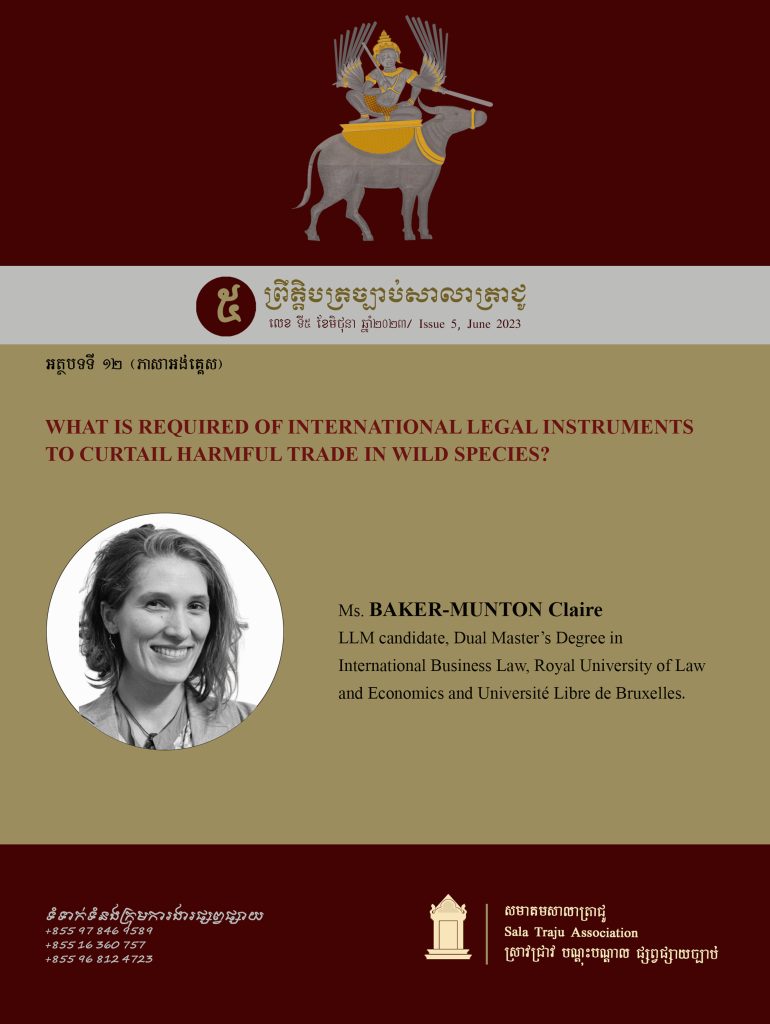
ABSTRACT
This paper considers the success of two MEAs, the Convention on International Trade in Endangered Species of Wild Fauna and Flora (1973) (“CITES”) and the Convention on Biological Diversity (1992) (“CBD”) to curtail the harmful trade in wild species, which are overwhelming distributed in the Global South. CITES aims to regulate trade as per provisions of Appendix-listed wild species that are or may be threatened by trade, thus embodying preventive and precautionary principles. However, provisions are not sufficient to effectively curtail harmful trade for three main reasons. Firstly, due to data deficiencies and non-integration of scientific evidence, Appendices do not accurately reflect threats. Secondly, provisions do not account for socio-economic drivers of trade, such as demand. Thirdly, non-compliance measures like trade sanctions give CITES teeth, but controlling the ecological threat of trade via the threat of loss of that trade indicates the overly economic valuation of wild species. The CBD shares this anthropocentrism but aims to generate awareness of the multiple values of biodiversity by creating incentives to promote its sustainable use. This aim is constrained by the softness of provisions, compounded by the absence of determinate indicators, targets and a robust compliance regime. Both MEAs need greater embodiment of common but differentiated responsibility via enhanced provision for international cooperation and finance to effectively curtail harmful trade in wild species. A further complementary pathway is via the criminalization of ecocide, which could prevent and avert harm subject to onerous but not overly inclusive thresholds. Thus, provisions of ecocide law could generate diverse values of biodiversity and balance responsibility for the protection of wild species with customary sovereign rights over natural objects.
